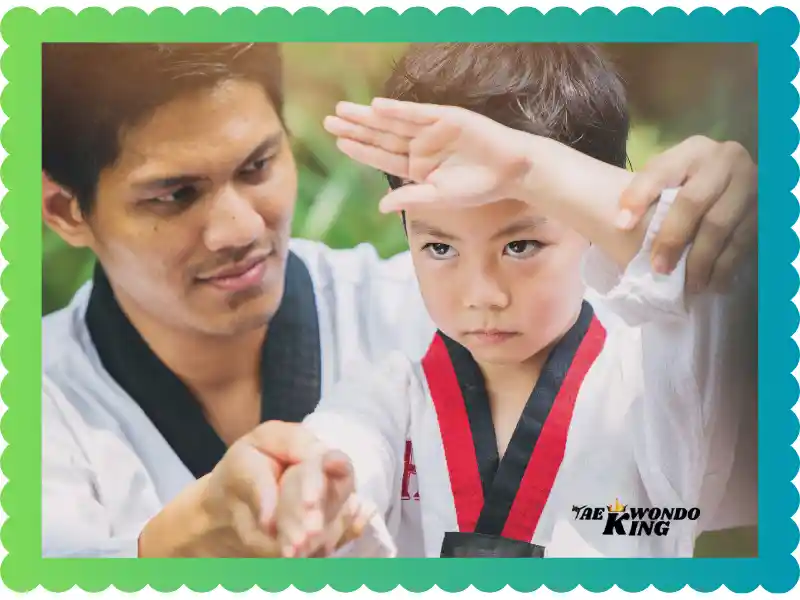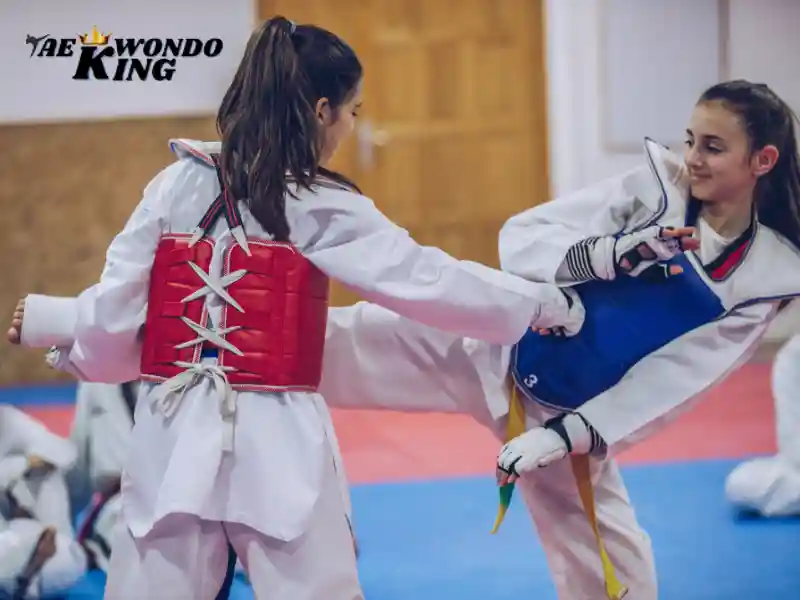
Greetings! I’m Ehatasamul Alom, a 3rd Dan black belt with a lifetime dedicated to Taekwondo. I’ve donned many hats in this dynamic martial art – national and international competitor, coach, referee, and most importantly, a passionate advocate for its potential to empower young minds and bodies. Today, I want to share my experience and equip fellow instructors with the ultimate guide to teaching Taekwondo to children.
Building a Foundation of Fun and Focus:
Embrace Playful Learning:
Make Taekwondo a joyful experience! Use games, drills with themes, and positive reinforcement to keep children engaged.
Short Attention Spans?
No Problem! Keep classes dynamic with varied activities and frequent breaks. Cater your teaching style to the age group, incorporating shorter, more focused sessions for younger children.
Building Blocks of Technique:
Focus on proper form overpower. Use clear instructions, demonstrations, and individual attention to ensure children learn the basics correctly. Repetition is key!
Cultivating Discipline and Respect:
The Power of Positive Reinforcement:
Celebrate effort, focus, and good sportsmanship. A simple “high five” or a verbal “well done” can go a long way in motivating young minds.
Discipline with Kindness:
Set clear expectations and boundaries, but always deliver them with respect and understanding. Use teachable moments to instill values like discipline, courtesy, and perseverance.
Building Confidence Through Belts:
The belt system is a fantastic motivator. Recognize progress and celebrate belt promotions as milestones in a child’s Taekwondo journey.
Safety First, Always:
Warm-Up, Cool Down, repeat:
Proper warm-ups prepare young bodies for activity, and cool-downs promote flexibility and injury prevention.
The Importance of Proper Gear:
Ensure children wear well-fitting protective gear like headgear, mouth guards, and groin guards to minimize the risk of injury.
Lead by Example:
Demonstrate safe training practices and always prioritize the well-being of your students.
Beyond Kicks and Punches: Life Lessons on the Dojang Floor:
Building Teamwork:
Incorporate partner drills and group activities to foster teamwork, communication, and respect for peers.
Focus and Self-Control:
Taekwondo teaches children to control their bodies and minds. Translate these skills to help them focus in school and manage emotions effectively.
Building Self-Esteem:
As children overcome challenges and master new techniques, their confidence soars. This newfound self-belief spills over into all aspects of their lives.
Remember, You’re More Than a Coach:
A Role Model:
Children emulate their teachers. Lead by example – demonstrate discipline, respect, and a passion for Taekwondo.
Communicate with Parents:
Maintain open communication with parents about their child’s progress and address any concerns they might have.
A Supportive Community:
Foster a sense of camaraderie amongst students. Encourage teamwork and celebrate each other’s successes.
Remember, you’re not just teaching Taekwondo but shaping young lives. By fostering a fun, safe, and respectful learning environment, you’ll ignite a passion for martial arts in your students, while equipping them with valuable life skills that will benefit them far beyond the dojang walls. Now, go forth and empower the next generation of Taekwondo tigers!
Free Taekwondo Training Guidelines for Beginners PDF
Ehatasamul Alom is offering a free PDF guide for beginners to learn Taekwondo. This comprehensive guide provides step-by-step instructions, training tips, and techniques for those just starting on their Taekwondo journey. Whether you’re new to martial arts or already have some experience, this guide is a valuable resource for honing your skills and mastering the art of Taekwondo. You can download your free copy today and kickstart your training with Ehatasamul Alom’s expert guidance.
Frequently Asked Questions
At what age can my child start Taekwondo?
Many dojangs offer programs specifically designed for children as young as 4–5 years old. These classes focus on basic motor skills, coordination, and building a love for physical activity in a playful environment.
Is Taekwondo too aggressive for children?
Not at all! Reputable Taekwondo schools emphasize self-control, discipline, and respect alongside self-defense techniques. Instructors teach children to avoid conflict and focus on de-escalation strategies whenever possible.
What are the benefits of Taekwondo for children?
The benefits are numerous! Children develop physical fitness, coordination, and self-defense skills. Taekwondo also fosters mental focus, self-confidence, discipline, and respect – qualities that benefit them both on and off the dojang floor.
How can I help my child succeed in Taekwondo?
Your encouragement and support are crucial. Show interest in their progress, celebrate their achievements, and help them practice basic techniques at home. Most importantly, emphasize the importance of fun and perseverance over winning or losing.
What should I look for in a Taekwondo school for my child?
Look for a dojang with a positive and safe environment, certified instructors with experience teaching children, and an age-appropriate curriculum that focuses on fun and proper technique. Don’t hesitate to observe classes to see if the teaching style aligns with your child’s needs.
How can I help my child prepare for Taekwondo class?
Encourage healthy sleep and a nutritious diet to fuel their energy in class. Discuss the importance of listening to the instructor and following class rules. You can also practice basic stretches or simple exercises together to get them familiar with movement.
What are some signs my child might not be enjoying Taekwondo?
Please pay attention to their behavior. If they consistently resist going to class, seem overly anxious, or experience frequent tears during practice, it might be a sign they’re not having a positive experience. Talk to your child and the instructor to understand the root cause and explore solutions.
How can I best support my child’s Taekwondo journey?
Express enthusiasm for their efforts, celebrate their achievements, and be patient with their progress. Attend their grading or demonstrations when possible to show your support. Most importantly, focus on the life skills they’re gaining, not just the physical techniques.
Are there any safety concerns with children in Taekwondo?
Reputable dojangs prioritize safety with qualified instructors, proper supervision, and age-appropriate training. Ensure your child wears the recommended protective gear and listens to their instructor’s guidance.
What are some benefits of Taekwondo for children besides self-defense?
Taekwondo promotes physical fitness, coordination, and body awareness. It also fosters self-confidence, discipline, focus, and goal-setting skills – qualities that benefit them in all aspects of life.

Founder, Owner, and CEO of TaekwondoKing.
He is one of the top 100 martial artists in the World and among the top 20 referees in Bangladesh.
Ehatasamul Alom is an esteemed Kukkiwon Certified Taekwondo 3rd Dan Black Belt with over 15 years of experience in this dynamic martial art. Born in Rajshahi, Bangladesh, Ehatasamul’s journey with Taekwondo began at the tender age of seven. His passion led him to compete at national and international levels, where he has bagged numerous awards and honors. He is also a member of the Taekwondo National Referee Panel.
With a Bachelor’s degree in Sports Science from the prestigious Rajshahi University, Ehatasamul has a deep understanding of the technical and scientific aspects of martial arts and some other martial arts.
In 2022, Ehatasamul created the “TaekwondoKing.com” to share his knowledge, Free Resources, Values, and Real experiences. His articles focus on Taekwondo training techniques, competition strategies, Sport Products Reviews, and the art’s rich history and philosophy. He also writes about the importance of mental fortitude and discipline, key aspects of his teaching philosophy. He has already launched many sports, Taekwondo, and health-related Free online tools. His goal is to inspire both beginners and seasoned practitioners worldwide through insightful and engaging content.
If you need any help, contact Ehatasamul Alom at any time.





Hey! I just wanted to ask if you ever have any problems with hackers? My last blog (wordpress) was hacked and I ended up losing months of hard work due to no data backup. Do you have any solutions to protect against hackers?
Great post. I am facing a couple of these problems.